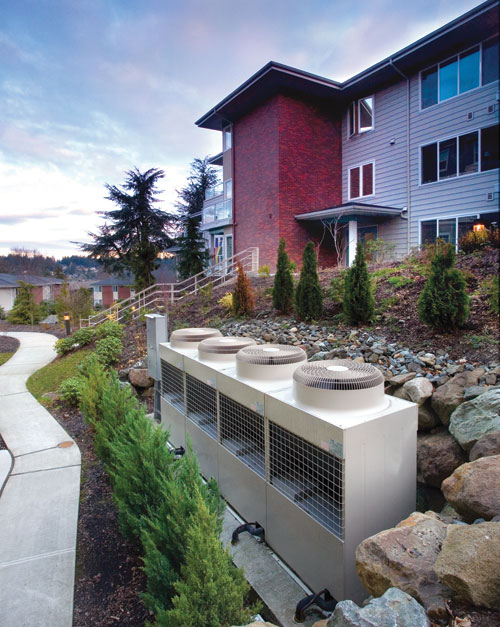Cool VRF Technology
Learning Objectives:
- Discuss Variable Refrigerant Flow (VRF) zoning technology and how it differs from conventional heating, ventilation and air conditioning systems (HVAC).
- Describe the energy-efficient features of VRF technology.
- Evaluate the energy efficiency and environmental impact of VRF systems.
- Identify the ways VRF systems can contribute to LEED
Credits:
One of the major focuses of green construction is delivering energy-efficient buildings. A mastery of HVAC design is, therefore, critical for design professionals engaged in the growing demand for LEED®-certified structures.
Most buildings have some type of heating, ventilation and air conditioning system. Yet, until relatively recently in the U.S., HVAC systems were aptly characterized as "horse and buggy" technology, having changed little over past decades. Now available on the market are state-of-the-art solutions employed and proven elsewhere in the world. One such new system that was developed in Japan, and widely used in Asia, Europe and South America, is Variable Refrigerant Flow (VRF) zoning, an energy-efficient method of providing precise zoned comfort control to indoor environments. At present, VRF is only about one percent of the HVAC market dollar volume, but its growth potential is staggering when one considers the increasing volumes in the past five years alone of the education, government/military, healthcare, lodging, multifamily and office sectors and their growing requirements for green construction. Other potential markets include churches and public buildings such as museums, civic centers and performing arts facilities.
HVAC OVERVIEW
Generating approximately $15 billion a year, the HVAC industry has been the subject of numerous analyses on the significant role it plays in U.S. energy consumption. According to the U.S. Department of Energy's Buildings Data Book, 22 percent of the nation's energy is consumed by HVAC in commercial buildings and 18 percent by the residential sector (transportation consumes 28 percent).
 |
|
Photo courtesy of Mitsubishi Electric |










